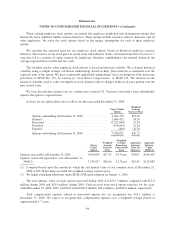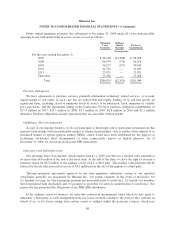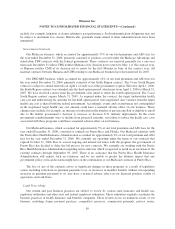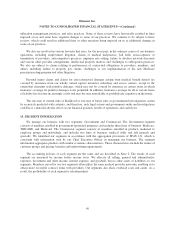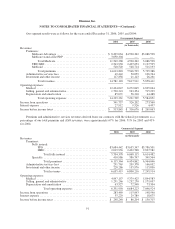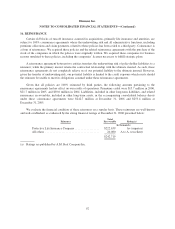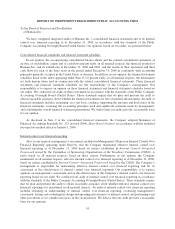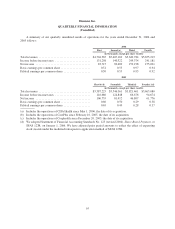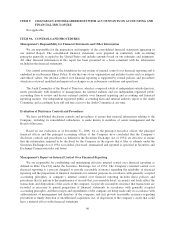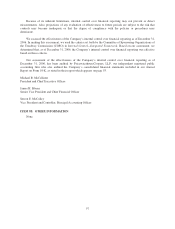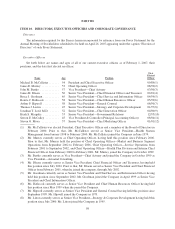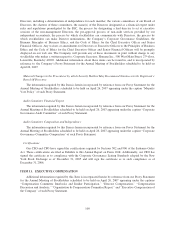Humana 2006 Annual Report Download - page 102
Download and view the complete annual report
Please find page 102 of the 2006 Humana annual report below. You can navigate through the pages in the report by either clicking on the pages listed below, or by using the keyword search tool below to find specific information within the annual report.Humana Inc.
NOTES TO CONSOLIDATED FINANCIAL STATEMENTS—(Continued)
utilization management practices, and sales practices. Some of these reviews have historically resulted in fines
imposed on us and some have required changes to some of our practices. We continue to be subject to these
reviews, which could result in additional fines or other sanctions being imposed on us or additional changes in
some of our practices.
We also are involved in various lawsuits that arise, for the most part, in the ordinary course of our business
operations, including employment litigation, claims of medical malpractice, bad faith, nonacceptance or
termination of providers, anticompetitive practices, improper rate setting, failure to disclose network discounts
and various other provider arrangements, intellectual property matters, and challenges to subrogation practices.
We also are subject to claims relating to performance of contractual obligations to providers, members, and
others, including failure to properly pay claims, challenges to our implementation of the new Medicare
prescription drug program and other litigation.
Personal injury claims and claims for extracontractual damages arising from medical benefit denials are
covered by insurance from our wholly owned captive insurance subsidiary and excess carriers, except to the
extent that claimants seek punitive damages, which may not be covered by insurance in certain states in which
insurance coverage for punitive damages is not permitted. In addition, insurance coverage for all or certain forms
of liability has become increasingly costly and may become unavailable or prohibitively expensive in the future.
The outcome of current suits or likelihood or outcome of future suits or governmental investigations cannot
be accurately predicted with certainty, and therefore, such legal actions and government audits and investigations
could have a material adverse effect on our financial position, results of operations, and cash flows.
15. SEGMENT INFORMATION
We manage our business with two segments: Government and Commercial. The Government segment
consists of members enrolled in government-sponsored programs, and includes three lines of business: Medicare,
TRICARE, and Medicaid. The Commercial segment consists of members enrolled in products marketed to
employer groups and individuals, and includes two lines of business: medical (fully and self insured) and
specialty. We identified our segments in accordance with the aggregation provisions of SFAS 131, which is
consistent with information used by our Chief Executive Officer in managing our business. The segment
information aggregates products with similar economic characteristics. These characteristics include the nature of
customer groups and pricing, benefits and underwriting requirements.
The accounting policies of each segment are the same and are described in Note 2. The results of each
segment are measured by income before income taxes. We allocate all selling, general and administrative
expenses, investment and other income, interest expense, and goodwill, but no other assets or liabilities, to our
segments. Members served by our two segments often utilize the same medical provider networks, enabling us to
obtain more favorable contract terms with providers. Our segments also share overhead costs and assets. As a
result, the profitability of each segment is interdependent.
90






